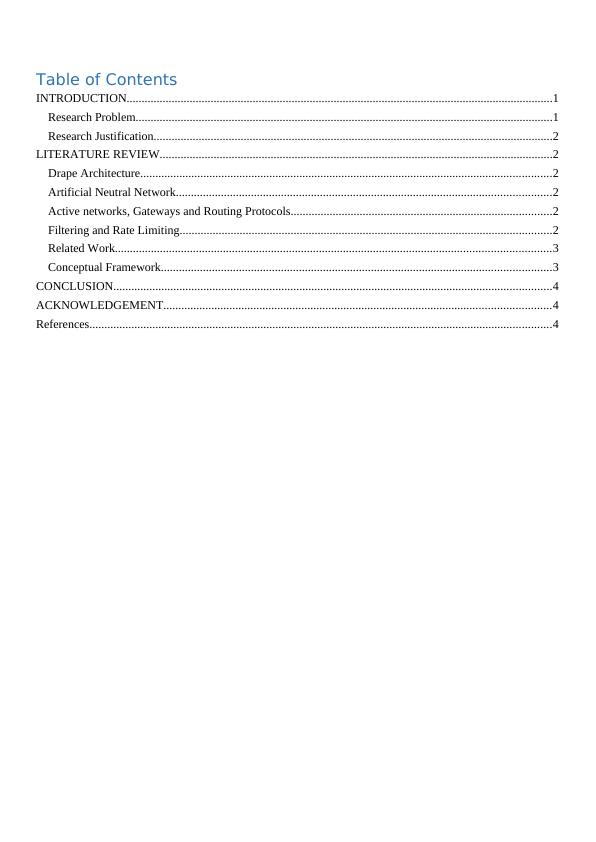ITC595 Research Project (Distributed Denial of Service Attacks)
Denial of service and distributed denial of service attacks is a type of attack where a “Trojan” virus attacked several computers are used to attack a single computer system resulting a denial of access.
6 Pages3302 Words205 Views
Added on 2023-06-12
About This Document
This research project focuses on the analysis, detection, and prevention of distributed denial of service (DDOS) attacks. Techniques such as artificial neural networks, filtering and rate limiting, and active networks are discussed. The proposed design for detecting and preventing DDOS attacks involves installing DDOS detectors in every network and using encrypted messages to communicate with other detectors. The study justifies the need for research in this area due to the popularity and widespread use of DDOS attacks by cyber criminals.
ITC595 Research Project (Distributed Denial of Service Attacks)
Denial of service and distributed denial of service attacks is a type of attack where a “Trojan” virus attacked several computers are used to attack a single computer system resulting a denial of access.
Added on 2023-06-12
ShareRelated Documents
End of preview
Want to access all the pages? Upload your documents or become a member.
Distributed Denial of Service
|10
|2237
|162
IT Security: Types of Risks, Organizational Procedures, Impact of Firewall Configuration, Implementation of DMZ, Static IP and NAT
|18
|1181
|61
Computer Security: Understanding Distributed Denial of Service Attack
|13
|2230
|463
Distributed Denial of Service (DDoS) Attack: An Overview and Real World Example
|10
|2158
|245
Network Devices Security: Threats, Potential Damages, and Mitigation Strategies
|6
|1897
|178
Computer Security: Melbourne IT Attack
|10
|2318
|138



